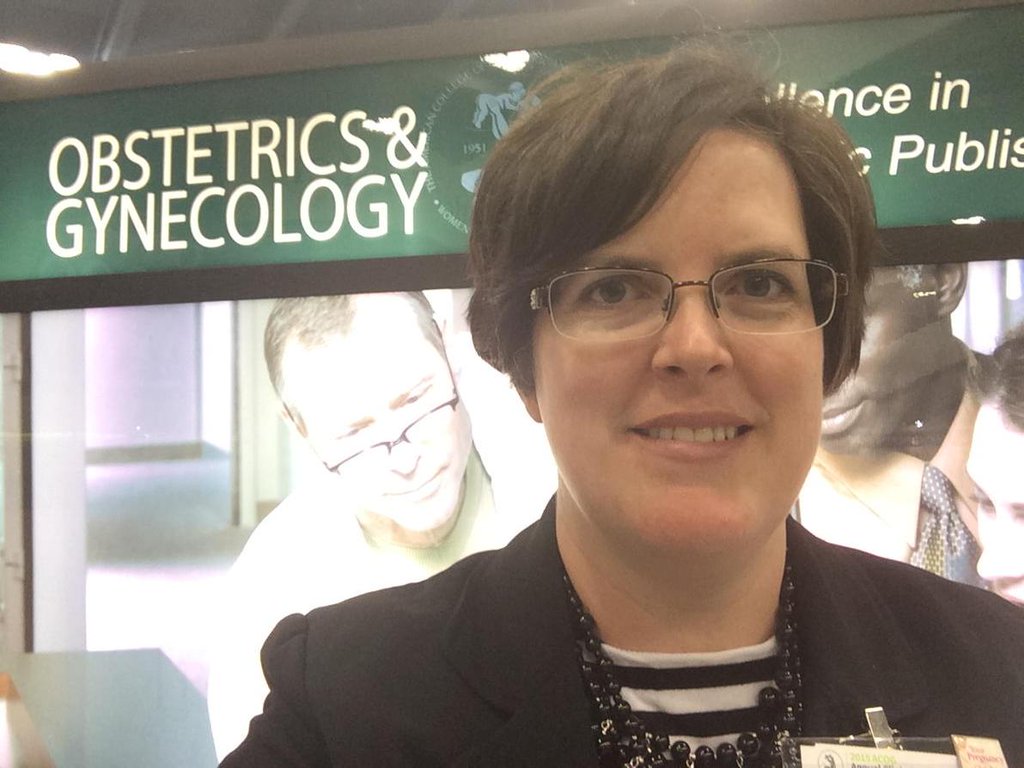Know More About Journal Editorial Processes: An Interview with Rebecca Benner (Part 3)

 In the third part of this interview series, Rebecca discusses with us how the academic publishing industry has evolved in the past few year and the future challenges. We also discuss her role at the George Washington University where she teaches courses related to academic publishing. In particular, we discuss with Rebecca about the different models related to peer review and the policies followed by Obstetrics & Gynecology. She also provides some enlightening suggestions and insights for early-career professionals who want to enter the field of academic publishing.
In the third part of this interview series, Rebecca discusses with us how the academic publishing industry has evolved in the past few year and the future challenges. We also discuss her role at the George Washington University where she teaches courses related to academic publishing. In particular, we discuss with Rebecca about the different models related to peer review and the policies followed by Obstetrics & Gynecology. She also provides some enlightening suggestions and insights for early-career professionals who want to enter the field of academic publishing.
Kuntan: You teach the course “Managing Editorial Staff.” Could you tell us more about this program?
Rebecca: George Washington University in Washington, D.C., offers a Master’s degree in Professional Studies. It is an excellent program because it covers all aspects of publishing comprehensively. Before working in STM publishing, I was also exposed to book publishing, trade publishing, design, and marketing. Furthermore, the degree program also covers editorial and copyright issues, production, and finance. Last year, I was invited to teach a course in the program, which is a big honor. It was a lot of work, but also a lot of fun, because I meet younger professionals who are really excited about being in publishing and get to be part of their journey, a resource for them, and hopefully a sort of mentor in their future. That is an enjoyable place for me to be at this stage in my career, helping other people as I myself was helped previously.
The course that I teach, Managing Editorial Staff, is eight weeks long. I teach it from the perspective of STM publishing, because I think that gives a great example of an editorial team. There are a lot of concepts that I can convey about managing staff, from the workflow aspect of it to the ethical things that you have to keep track of. I try to keep it very practical, so we have them write job descriptions and try to imagine, if they are the managing editor, how they are going to orient their new editorial system on the first day. I get them to put themselves in that position and ask themselves: if I were managing an editorial staff, how would I handle this?
Kuntan: What are your editorial policies with peer review? Do you follow blind peer review or open peer review?
Rebecca: Our policy right now is single-blind peer review. The reviewers know who the author is, but the author does not know who the reviewers are. It is a closed system. We have had conversations about open peer review. Just yesterday, I attended a Committee on Publication Ethics meeting and we had a great talk around open peer review. They have working documents on the topic, and my job involves taking these types of things that are being discussed, thinking them through, and seeing what our editors are thinking and where they want to go. But right now, our peer review process is very traditional.
Kuntan: What is the benefit of this particular model?
Rebecca: I guess the main benefit of the single-blind process is just keeping the whole process confidential. Reviewers know that the manuscript is confidential and they can’t talk about it to anybody. But would authors want to know who their reviewers are? That’s a great question. And would the reviewers want the authors to know? If it is open peer review, would the reviewers do a better job reviewing the paper? I don’t know if I even have an answer to those questions. I think that single-blind review is the way it has always been done, but that is not to say that it is the best way going forward. So this is something that we are looking at. The Committee on Publication Ethics has a Peer Review Congress coming up in Chicago in 2017. Maybe, if somebody will start looking at this topic and do some research on it, it will be great to see people who have done open peer review share a little data about what they are doing.
Kuntan: What is your opinion about giving credit to peer reviewers?
Rebecca: I think that is important, and it is something that we do. Like many journals, at the end of the year we publish the names of our reviewers at the back of our journal, thanking them for their efforts. For those reviewers who are in the top 10%, who turn things around quickly and have submitted excellent reviews, we send them a special letter saying, “Thank you so much for reviewing for our journal. You have been identified as being in the top 10%, and we hope you will share this letter with your chair.” We have gotten some good feedback on those letters; people really like them. I think that within the confines of a confidential and closed system, the more credit and thanks you can give to your reviewers, the better.
Kuntan: When a paper gets rejected, I have noticed that some journals just send a paragraph saying the journal is rejecting the manuscript because of one or two reasons. In certain cases, I have seen journals actually send a checklist with different items, such as title, abstract, and clarity of language, with specific comments next to each one. There is considerable diversity in how different journals communicate the reasons for rejection. In your view, what is a best practice when it comes to explaining to authors why their paper got rejected?
Rebecca: For us, if the submission has been sent out for peer review, we include all the comments by the peer reviewers. We ask our peer reviewers to number their points and to refer to line numbers of the article, so that it can be very clear to the author what they are talking about, thereby making the information more actionable. We are trying to be as clear as possible in our letters back to our authors, whether it is rejection letters or revision letters. We don’t have a checklist. I am sure that approach works for some journals. There is probably no standard because journals are so different and they have different numbers of staff. Some have only one staff who wears all the hats, from editor-in-chief to editorial assistant, whereas other journals have an army of people working for them. I think it probably just depends on the journal itself, and there is no best way to do it, but I certainly believe that the more information you can give people clearly, the better.
Kuntan: Do you provide any resources to authors when a paper is rejected, indicating that those resources might guide them with their next steps?
Rebecca: No, we don’t provide resources to authors if we reject the submission. We let the peer reviews stand on their own and hope that the authors will incorporate them into the next iteration of their manuscript before submitting it to someone else, but usually, we don’t say anything further. There might be special cases where the editor might have very specific recommendations for the author and so might put them in the letter. But overall, we hope that the authors will take those reviews and make their paper better for whatever they decide to do with it next.
Kuntan: Is there any kind of outreach that you in particular conduct from your society or journal to countries with non-native English speakers?
Rebecca: We haven’t done much outreach to international authors, but we certainly have seen an increase in submissions from Asia, and from China in particular. Even though our journal is read internationally, as I said earlier, our members are mostly in the United States and so our outreach efforts have been focused here. For instance, at ACOG’s annual meeting, our editor-in-chief will offer a course on reviewing a manuscript and how to do that. We have had courses on how to get published in the journal. We do have a free, online guide on writing that we have published in the past, which is a nice resource to which we frequently refer people, and we are in the process of revising it. But those are all very passive steps. We have resources on our website for authors, but we haven’t really reached out very much to international authors.
Kuntan: Are all manuscripts treated in the same way? Do you look at whether the manuscript was submitted by an international or a U.S. author—does that make any difference?
Rebecca: We try to treat all manuscripts in the same way and to be careful not to apply any sort of prejudice to one region in the world versus another. By prejudice, I mean preconceived notions about what we might be receiving. We want to treat every manuscript fairly and equitably, and really the only way that you can be fair is to have policies and instructions that are applied across the board, in the same way, to every manuscript that comes in, no matter where it is coming from. For instance, all our manuscripts that are potentially acceptable go through our cross-check for plagiarism. For every article, we make sure that they have ethics board approval. For every case report, we check whether they report having the patient’s consent in their files. All these steps are applied to every single article, whether it comes from the United States or from another country.
Kuntan: You have been in the industry for such a long time and have filled so many different roles from copy editing to production and now at a strategic level, driving the strategy for your journal. How has the academic publishing landscape evolved, and what are the future challenges as you see them?
Rebecca: Well, the biggest change I’ve seen has been in the digital world. When I started, we were doing things on paper and by mail, then working with floppy disks and fax machines. That wasn’t so long ago, and now everything is done electronically. I think we are just responding to these changes and some of the challenges that come with them. Being in a digital world, you have to be innovative; it is not something static like a print publication, where you might redesign it every few years but otherwise it is what it is. With digital, you have to make sure your website is kept up-to-date, and that your articles are available in PDF format that is downloadable. Maybe you have podcasts, videos, and other electronic things that you couldn’t do 10 or 15 years ago, but now you can. The challenge is just finding the time to do these things and make them part of the workflow, but overall these are changes that people have now been talking about for a long time. There has been a lot of change, and open access is one of those changes. Of course, libraries have come into the mix, and how we are distributing our materials, and whether everything should be free. We need to think about and respond to these things and really look hard at our processes to see if there is anything that we need to change. The question of transparent, open peer review is one thing that we need to be looking at. Access issues are a big area. And then just the peer review process itself—continuing to try to improve it and make sure that we are acting ethically and in the best interest of authors, peer reviewers, and the public at large.
I think there are some things that we can do better. The good news is that there are really smart people in the field, from small economical publishers to even giant commercial publishers. People are really trying to do the right thing, and they are excited about innovations in the digital area. They want the best for this field as a whole, and they want materials to be out there being read and consumed. I don’t have a magic globe to see into the future, but for me personally and for my staff, it is important to be able to change, to understand that change is just part of this business and that we have to learn new skills and stay up to date. That’s a challenge for us, but it is part of the job description now.
Kuntan: What advice do you have for early-career professionals who want to get into publishing?
Rebecca: I think that if you are early in your career, one great thing to do is to get involved with professional associations like the International Society of Managing and Technical Editors, the Council of Science Editors, the Society for Scholarly Publishing, and even the Committee on Publication Ethics. Attend meetings if you can, or sometimes these groups have webinars online. Then as part of that involvement, maybe you’ll join a committee. In that way, you really start to meet people in the field, do a little networking, and build relationships. As for where you need to be, you can survey the publishing landscape. If you’re interested in books, you might move to New York City; if you are more interested in association publishing, maybe D.C. or the Philadelphia area. But then there are also freelancing opportunities. Continuing education is another important component. If this is the field that interests you, you could do something like the George Washington University master’s program, just to get that much more experience and a real-world sense of publishing. I think it is important to reach out to people and get involved in organizations. Find people at meetings and talk to them, people who are little more senior than you. And then just start some place, even at the bottom, and work your way up and see how it goes from there. It can be intimidating—networking is always very intimidating and hard to do, especially when you are young and just starting out. However, if you can find someone who can be a mentor to you, that is a big help.
(This interview is a part of our interview series of connecting scholarly publishing experts and researchers.)







